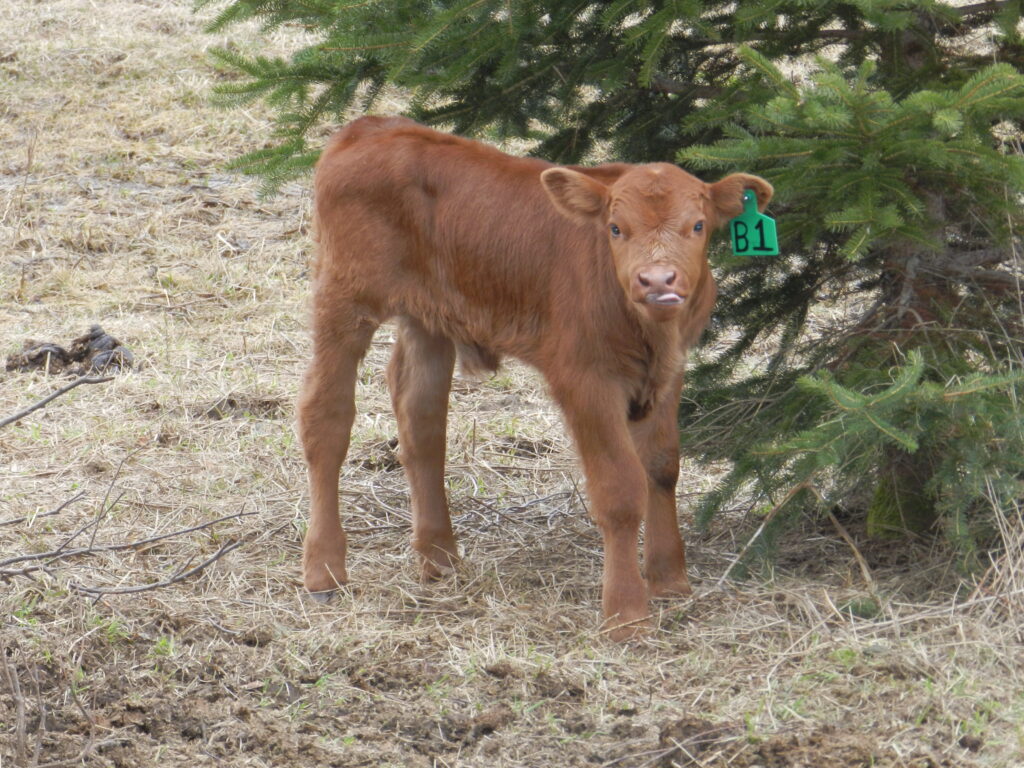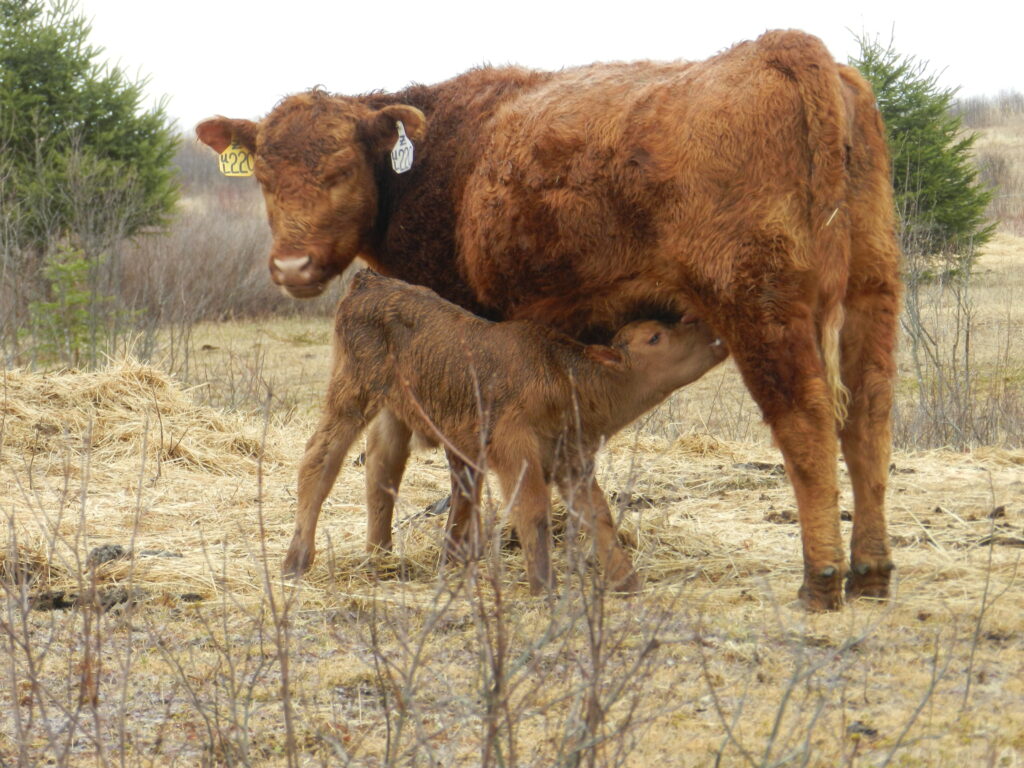Calves get out. If you’re raising cattle, it’s inevitable to expect a calf to get out of the pasture you want the little bugger in. Calves are small enough to slip under and between fence wires, and younger calves haven’t had the experience to be trained to stay within a fence. By constructing and maintaining good fences you can minimize these problems, but at some point you’ll have some calves get out of a pasture.

When a calf gets out it can be a pain. The momma cow will probably be upset and mooing at her calf to come back, especially when her udder is filled up with milk and she’s hurting to be nursed. The calf may be bawling, or it may just not care at all. If you have nosey neighbors, you’re apt to get phone calls from people telling you you’ve got a cow out, and although it’s often helpful to know, this can be a pain in the rear as well.
So how do you get a calf back in with the cow when it gets out?
Apply Gentle Pressure
If a calf is next to the fence and looking back toward its mother, or the rest of the cattle herd, it probably wants to get back in with them but doesn’t know how. Often calves will slip through a hole in the fence, either through a wider opening caused by fence construction, deterioration, or natural features on the land, like low spots where they can slip under the wire. They also could have gone through after pressure was applied, like other herd mates pushing them across the fence or getting scared and running through the fence without knowing (or caring) it was there. So even if they want to get back in, a calf often doesn’t know where they got through the first time and how to get back. The calf is probably nervous to go through the fence again as well. We run electric fence on our farm, and calves often feel the shock when hitting the fence and become really nervous about experiencing that again.
If the calf clearly wants to get back through the fence, you can help by crossing the fence yourself and getting behind the calf. Walk quietly and gently, and attempt to move the calf along the fence line while applying enough pressure to get them moving along. Sometimes just gentle pressure will cause the calf to slip back through the fence and all is good. Other times, you may have to drive the calf a long distance to find an opening, or toward an open gate they can walk through. Be aware, though, that it will be very difficult to get a calf to walk in the opposite direction of other cows, so if that is required to get it through a gate, forget it – it’s probably not going to work. And if I’ve learned one thing after a decade of working cattle, it’s that you can’t get a bovine to do something they don’t already want to do…..at least not without a whole lot of trouble! While walking the calf along the fence line, it will occasionally find a place where it stops, faces the fence and wants to get through. Either it’s a place where the calf thinks it can get through, or where it sees mom. At this stopping point, I like to apply a quick burst of pressure to see if I can get the calf to brave going through the fence and getting back in the pasture. If you have electric fence, be sure to turn off the electricity during this exercise. The calf getting shocked during this stressful experience usually doesn’t help matters.
Enlist the Cow for Help
If after a few tries you aren’t making any progress getting a calf to move back in with its mom, it’s important to stop and regroup. If you continue to try, you will waste hours of your time, be no further ahead, and stress an animal far more than need be. And unless you’re a professional cowboy who can rope and haul the calf back in (that would be the quick solution), you’re just digging deeper. If the cow hasn’t moved over to the calf and started mooing at it, the best thing you can do is wait.

Lactating cows are used to being nursed every few hours, and when a calf is out of the pasture long enough, the cow’s udder will fill with milk and she will get very uncomfortable. This is nature’s way of ensuring the cow is caring for her calf. A full bag makes a cow want to seek out her calf and be nursed. A mothering instinct will also cause her to make sure it’s her own calf that does the nursing, so if the calf is gone, she’ll be looking for it. Use this to your advantage.
When the cow and calf are separated only by the fence you want to get the calf across, it’s time to migrate them both toward the nearest gate, or opening you can make in the fence. Use gentle pressure to push one along and the other will usually follow. If not, hop over the fence and push the other. Once you get near the gate opening, the calf often still won’t go through, but the cow will exit the pasture and go to her calf. The calf will immediately start nursing and both breathe a collective sigh of relief. At this point, it will be nearly impossible to separate the pair for a while, and you can use gentle pressure to push the cow into any direction you want and the calf will follow, making it easy to get them both back in with the herd.
Ignore it!
When we had our first crop of beef calves many years ago, we’d spend hours with the pairs, dealing with the inevitable days-old calf going through the fence. I can’t imagine how many times we chased a calf back across a fence, only to find that calf or another on the wrong side of the fence again within hours. Over time we learned that you don’t need to be on a constant vigil with the fence slipping. It is overwhelming and in our case proved to be unnecessary. We try to have our young calves in large pastures with less fence line contact, away from the road, and out of sight of passersby. When we check the animals or are in the area, we keep an ear open for a cow that’s mooing extra loud and annoyed-like, and if it continues for too long we then go to the pasture and see what’s up. We still have to get calves across fences, but far less often than we used to. The calves learn on their own – especially with electric fence – and the vast majority become fence trained over time without our help!
Leave a Reply